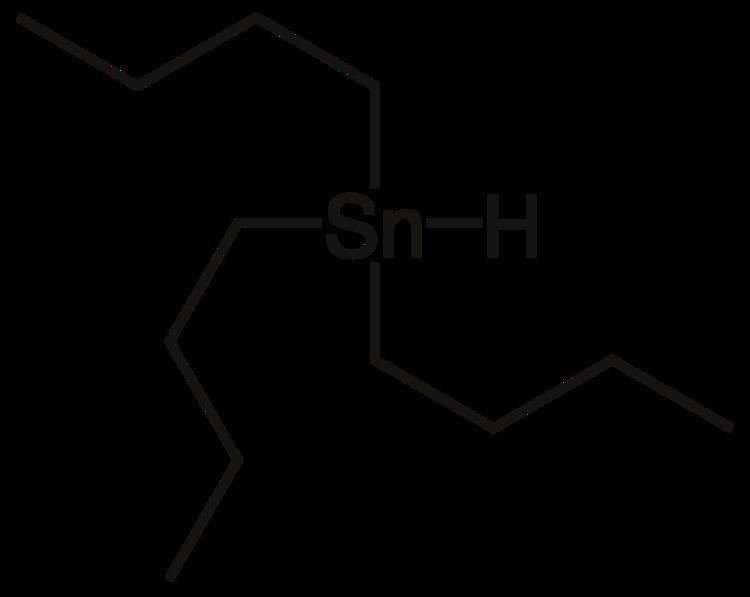Formula SnC12H28 Density 1.08 g/cm³ Gmelin Reference 4258 | Molar mass 291.06 g/mol Beilstein Reference 3587329 Pubchem 5948 | |
 | ||
Boiling point 80 °C (176 °F; 353 K) at 50 Pa | ||
A16 reductive dehalogenation with tributyltin hydride reaction mechanism
Tributyltin hydride is an organotin compound with the formula (C4H9)3SnH. It is a colorless liquid that is soluble in organic solvents. The compound is used as a source of hydrogen atoms in organic synthesis.
Contents
- A16 reductive dehalogenation with tributyltin hydride reaction mechanism
- Synthesis and characterization
- Applications
- References
Synthesis and characterization
The compound is produced by reduction of tributyltin oxide with polymethylhydrosiloxane (Bu = CH3CH2CH2CH2):
2"(MeSiH)" + (Bu3Sn)2O → "(Me2Si)2O" + 2 Bu3SnH(Bu3Sn)2O + 2/n (MeSi(H)O)n → 2 Bu3SnH + 1/n [(MeSiO)2O]nThe hydride is a distillable liquid that is mildly sensitive to air, decomposing to (Bu3Sn)2O. Its IR spectrum exhibits a strong band at 1814 cm−1 for νSn-H.
Applications
It is a useful reagent in organic synthesis. Combined with azobisisobutyronitrile (AIBN) or by irradiation with light, tributyltin hydride converts organic halides (and related groups) to the corresponding hydrocarbon. This process occurs via a radical chain mechanism involving the radical Bu3Sn•. The radical abstracts a H• from another equivalent of tributyltin hydride, propagating the chain. Tributyltin hydride's utility as a H• donor can be attributed to its relatively weak bond strength (78 kcal/mol). Recently, transition metal hydrides have emerged as attractive alternatives to tin hydrides, as transition metal hydrides can be used catalytically and have more variety in bond strength.
